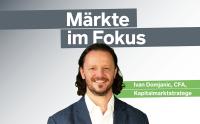The S&P 500 Index’s powerful post COVID-19 bull market started in March 2020 and more than doubled before it topped out at its all-time high on January 3, 2022. Stocks closed down 16% for the second quarter and dropped 20% for the first half of the year, which was the S&P 500’s steepest total return decline since 1962. Investors brace for more volatility amid heightened inflation and expected interest-rate increases. Also, the Russia-Ukraine war and uncertainty associated with future oil production make it more difficult for investors and consumers to navigate in the current inflationary environment.
The Russia-Ukraine war, which now has lasted over four months, has severely impacted global trade, specifically commodity prices. Russia’s invasion of Ukraine prompted Western powers to ban imports of Russian crude and refined products. In addition, the European Union agreed to ban 90% of Russian oil by the end of this year. In an effort to retaliate, Russia has cut off several exports of natural gas to European countries, which creates additional tension to the existing energy supply crunch.
On June 15th, the Federal Reserve announced a 75bp rate hike, the most aggressive rate hike since 1994, in an effort to further combat inflation. Fed Chairman, Jerome Powell, acknowledged the unusually large rate hike but said he does not expect moves of this size to be common. The Fed will continue to monitor inflation and decisions will be made “meeting by meeting”. The market awaits the next FOMC meeting on July 26-27.
M&A activity has remained vibrant as the second quarter of 2022 marked the eighth consecutive quarter that M&A activity exceeded $1 trillion. Excluding SPAC mergers, M&A activity totaled $2.1 trillion, a decline of 14% from the record setting $2.5 trillion in the first half of 2021. The Technology sector was the most active for M&A accounting for a record 25% of dealmaking in the first half, or $530 billion, while Industrials and Financials each accounted for 12%. Private Equity remained highly acquisitive, announcing $553 billion in deals, accounting for a record 26% of all deals in the first half.
Despite spreads widening in June, deals continued to make progress towards closing. Swedish Match (SWMA SS-SEK104.20-Sweden) disclosed they received U.S. antitrust approval to be acquired by Philip Morris International for SEK106 cash per share in a tender that expires at the end of September. Coherent (COHR-$266.22-NASDAQ) and II-VI Inc. received Chinese SAMR approval, which was the final remaining regulatory approval and allowed the deal to close at the end of June. Ultra Electronics (ULE LN-£34.62-London) received provisional approval from the U.K. government to be acquired by Cobham for £35 cash per share, or about £2.5 billion.
Convertibles had another down month as underlying equities lagged and credit spreads continued to widen. With equity markets declining, we have seen premiums expand substantially in some convertibles. As noted previously, issuance has been a hot topic over the last few years with record issuance levels in 2020 and 2021. The primary market has slowed significantly in 2022 but we have seen a number of companies test the waters with potential deals only to pull them given the market conditions. These companies will still need capital to operate, and the convertible market remains one of the least expensive ways for them to raise that capital. We saw a few new issues in May and June, and we are optimistic that issuance will pick up through the second half of the year. In past downturns, the convertible market has been one of the first markets to rebound both from an issuance and performance perspective. This is because convertibles can be issued quickly and less expensively than traditional bonds or equity. The equity optionality allows investors in these issues to participate in the upside as the market recovers.
22.07.2022
Gabelli Funds, LLC




